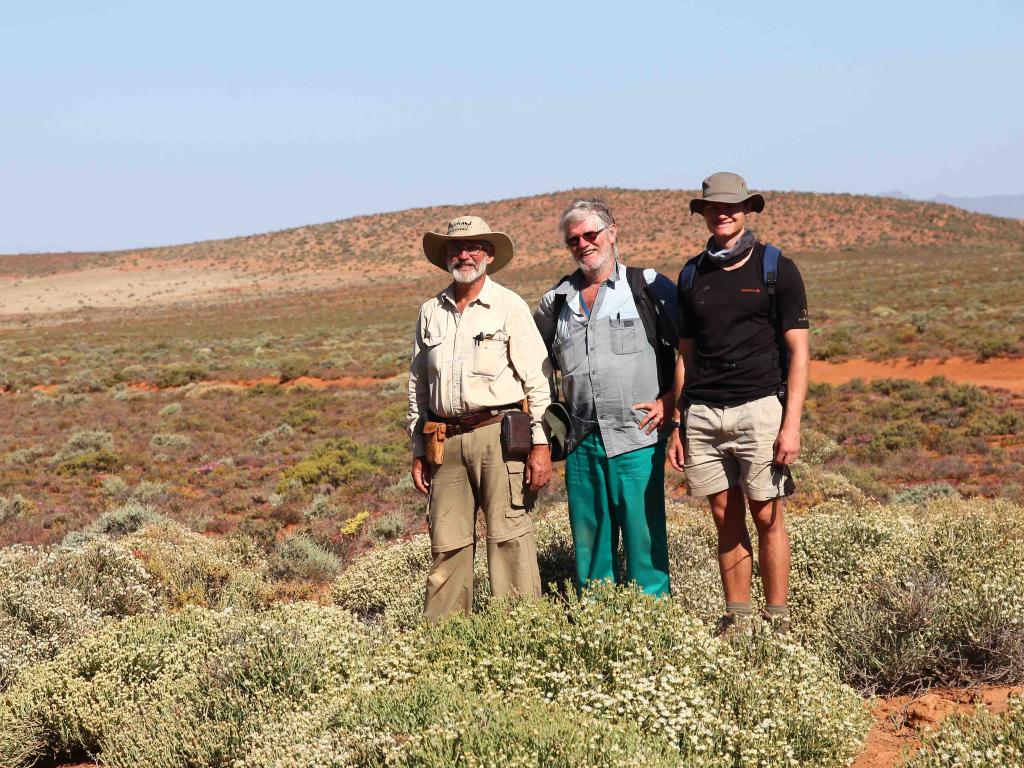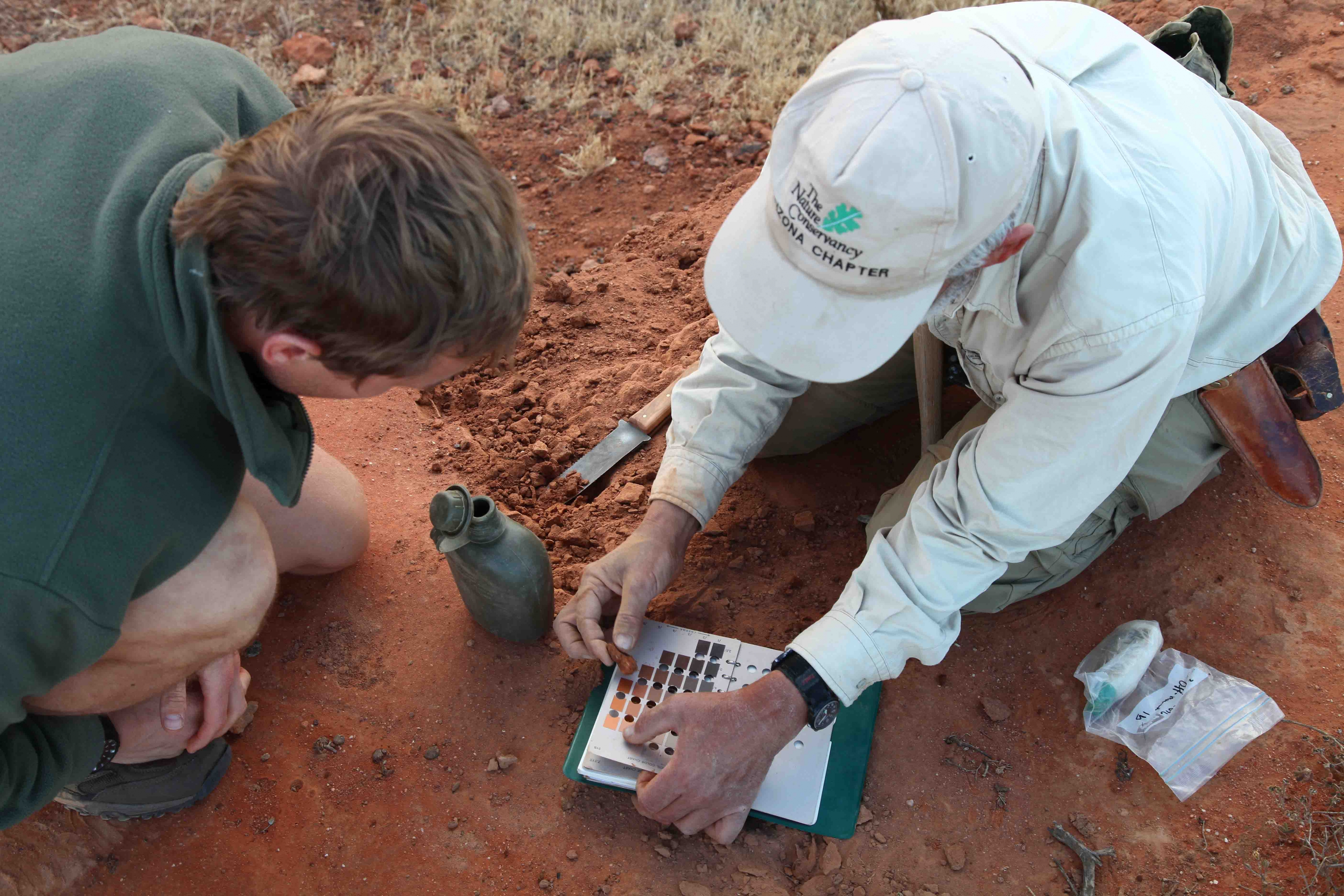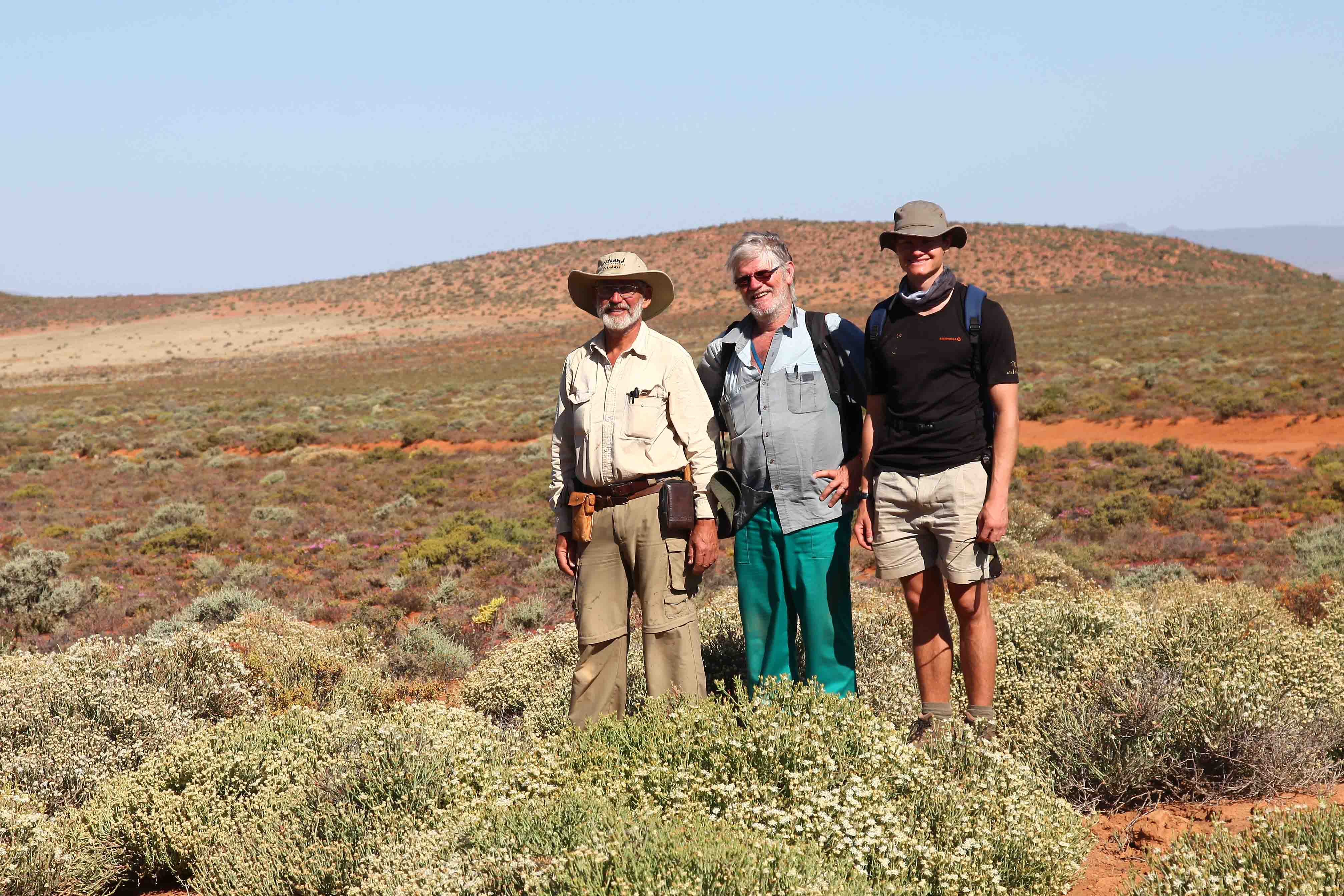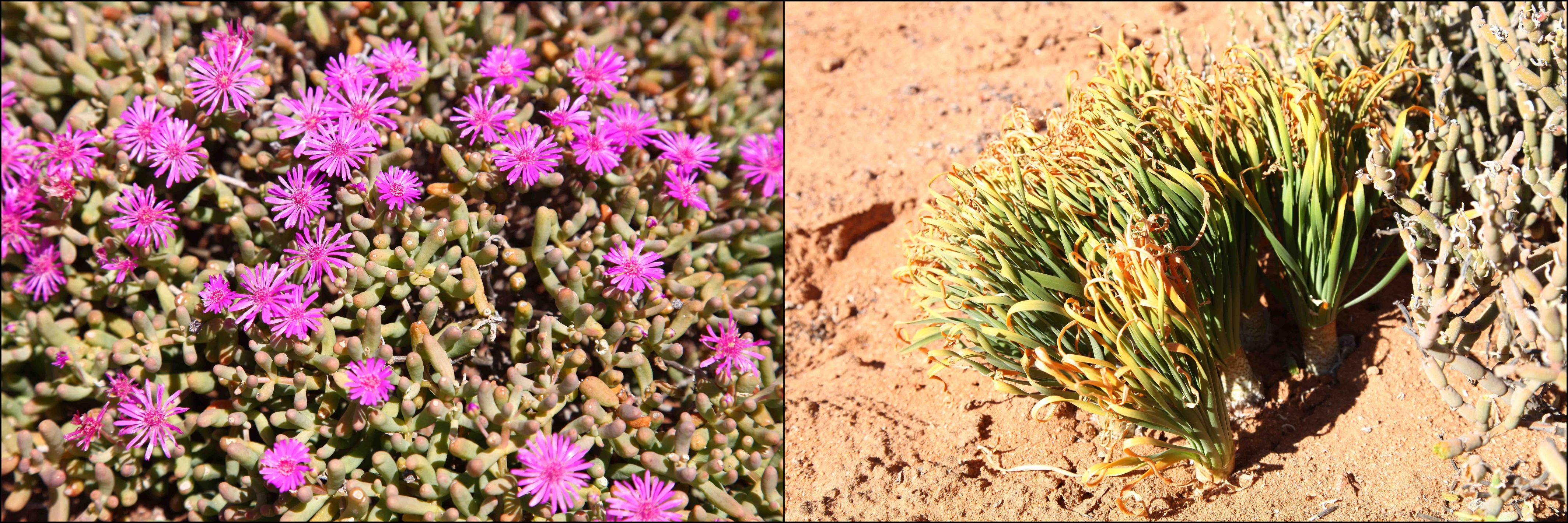Heuweltjie hunting in Namaqualand

~ Article written by Wesley Bell & Sam Jack. Photographs supplied by Sam Jack.

Dr Joe McAuliffe taking in a landscape filled with heuweltjies in the Olifants River valley.
Dr Joe McAuliffe, Director of Research at the Desert Botanical Garden in Phoenix, Arizona has been an engaging collaborator with the Plant Conservation Unit (PCU) over the last several years, stemming from an original meeting between him and the current Director of the PCU, Prof Timm Hoffman, during Timm’s post-doctoral studies at Las Cruxes, New Mexico in the early 90’s. Joe visited the PCU in 2012 to begin investigations into heuweltjie formation, which is currently a hot (and dare I say, unsolved) topic in science. Heuweltjies are regularly-spaced low mounds which occur particularly within more arid regions in south-western South Africa and are often associated with a different suite of vegetation compared to the areas surrounding the mound.
Joe’s initial visit led to a successful publication but also yielded many new questions and compelled Joe to return to gain a deeper understanding of the phenomenon. The additional catalyst for the recent visit was an invitation to speak at the Arid Zone Ecology Forum, held in Prince Albert in early October 2016. Here Joe spoke about his updated hypothesis for heuweltjie and mound formation, or lack thereof, based on climatic drivers, vegetation structure and windblown sediment supply, as well as the central role played by termites. In order to explore and examine these new ideas, Joe embarked upon an extensive fieldwork programme. The Karoo component of the fieldwork commenced with Timm subsequent to the conference, and after a short break in Cape Town, Namaqualand was the next destination.

Joe posing with a heuweltjie in cross-section, created by a roadcut south east of Klawer.
The Namaqualand leg of the trip took the team (Joe McAuliffe, Sam Jack, Wesley Bell and Timm Hoffman) from sites south of Klawer to the east of Vanrhynsdorp, east of Nuwerus and finally west of Steinkopf over a period of 11 days. Each site was unique in its characteristics and provided fascinating insights (and sometimes generated challenging questions) on the processes of heuweltjie formation, maintenance and decay. It soon became apparent how centrally important Joe’s knowledge of soil science was to understanding heuweltjie formation, and he very patiently shared this knowledge with the rest of the group. Similarly, Timm’s knowledge of the flora of Namaqualand helped in the compilation of comprehensive species lists for on and off heuweltjies. In short, the fieldwork was hugely interesting and educational and provided a rigorous test for Joe’s hypotheses.

Joe explaining the use of a soil colour chart to Wesley. The percentage of sands to silts and clays is also tested by wetting the soil, forming it into a ball, and then feeling for texture and clay content by pushing the soil into a ribbon between two fingers.
Fieldwork resulted in the collection of 130 soil samples (80 more than anticipated!) and as a result you are likely to find Joe (and Wesley) hard at work in the soils lab for the next week attempting to process all of the samples. Specifically Joe will be determining soil texture (% sand, silt and clay), salinity (electrical conductivity of aqueous soil extracts) and calcium carbonate content (measured by digesting soil in HCl) of samples collected both on and off heuweltjies. The race is on to complete this work so that Joe can return in time to cast his vote in the US elections. He has even been forgoing his regular lunchtime siestas in order to complete this work in time!

Joe, Timm and Wesley in the field. The heuweltjie on which they are standing is covered by Mesembryanthemum leptarthron (previously Psilocaulon), a commonly dominant heuweltjie species throughout much of Namaqualand.
Joe’s ability to interpret how landscape features have evolved from the bedrock up and to develop testable hypotheses to explore observed patterns has been educational and inspiring. So too has been his enthusiasm for sometimes quite challenging fieldwork, and his siestas are catching on too. We thank him for visiting and for sharing his knowledge. We look forward to hearing what results emerge from this fieldwork season and hope to welcome him back in future.

Namaqualand is a paradise for flowers and botanical oddities. On the left is one of the many mesembs that occur in areas between heuweltjies, and on the right is a curious Gethyllis cf britteniana.
